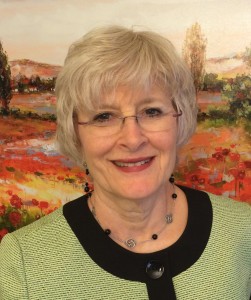What is Houston’s DNA?
By Debbie Z. Harwell
 “Discover your ethnic origins,” find the “source of your greatness,” trace your “health, traits, and ancestry,” and “amaze yourself…find new relatives.” Ads proliferate from companies like AncestryDNA, 23andMe, and MyHeritage enticing us to learn more about who we really are.
“Discover your ethnic origins,” find the “source of your greatness,” trace your “health, traits, and ancestry,” and “amaze yourself…find new relatives.” Ads proliferate from companies like AncestryDNA, 23andMe, and MyHeritage enticing us to learn more about who we really are.
People who send a saliva sample for analysis may be completely surprised by the findings or even united with unknown family members. For others it either confirms or denies what they believed about their heritage. For example, my AncestryDNA report debunks the story passed down by my mother and her blonde-haired, blue-eyed siblings that their grandmother, who they never met, was a “full-blood Cherokee Indian.” Instead, my DNA analysis shows zero percent Native American ancestry.
Our intern Johnny Zapata thought of himself as Mexican and one-sixteenth Chinese before receiving his surprising AncestryDNA results. For starters, he is 55% Native American, which was unexpected since his skin tone is light and his family comes from Northern Mexico where higher percentages of European ancestry predominate. The test confirmed he is 6% East Asian or Chinese and 6% Italian, which solved the mystery of his great-grandmother’s ancestry. She was known to be half Chinese, but no one knew if she was also half French or Italian. Looking deeper into his results, the 4% British, 2% Western European, 1% Irish, and 2% North African reveal the centuries-long migrations of Visigoth, Celtic, and Arab peoples from across Europe and the Mediterranean to the Iberian Peninsula and, then, to the Americas. Like many who do DNA testing, Johnny began to reassess his identity, as he explains, “In the United States all people from south of the border are given a blanket label, Hispanic or Latino. … The racial binary constructed in this country does not fit the reality of centuries of racial mixing that occurred in Latin America. Previously, when asked my race I would select ‘white,’ but after taking this DNA test I now proudly select Hispanic or Latino for my ethnicity and, when given the option, check three boxes for my race: white, Native American, and Asian.”
As we worked on this issue about Houston’s Latino community, it raised the question, what does Houston’s DNA look like? Today a DNA test would reveal Houston is the most ethnically and culturally diverse large metropolitan region in the United States, based on the distribution of the four largest racial/ethnic groups in the population. The 2010 Census showed Houston to be approximately 33% White, 18% Black, 41% Hispanic, 7% Asian, and 1% other. But Houston’s DNA has not always reflected such a diverse heritage.
Populated originally by Native Americans, Mexicans, and Tejanos before empresarios parceled out the land, Houston quickly became an Anglo town, developed by savvy businessmen, making it a commercial hub. By the 1840s, Germans were coming in large numbers, as were other European immigrants. The numbers of Mexicans and Tejanos remained low until the 1910s-1920s, reaching about five percent in 1930. African Americans made up almost a quarter of the population, with their numbers growing during the Great Migration and with the influx of Creoles throughout the 1920s.
Houston’s DNA, like the nation’s, remained largely European due to federal laws: The Chinese Exclusion Acts of 1882, 1892, and 1902; the Immigration Act of 1924, which imposed quotas mirroring each ethnic group’s representation in the population, maintained the existing racial order; and the Mexican Repatriation Act of 1930, which permitted the deportation of Mexicans—even some who were U.S. citizens—to relieve the stress they allegedly placed on the economy. American attitudes toward Mexicans changed during World War II. The U.S. and Mexican governments signed the Mexican Farm Labor Program Agreement, which brought in Mexican workers to fill U.S. labor shortages, but these braceros were not allowed to stay here.
The fortunes of hopeful emigrants changed with passage of the Immigration and Nationality Act of 1965 that allowed people to enter the country based on new criteria, including their technical skills, family reunification, and political persecution. The law opened the way for waves of new residents who came to Houston, altering our DNA and expanding the breadth of our city’s culture. Beginning in the 1970s through 2010, the number of Latinos and Asians in Houston rose dramatically, with Latinos going from 11% to 41% of the population and Asians shifting from less than 1% to 7% of the total.
In thinking about the people discussed in this issue, I cannot help but be grateful that our DNA is so diverse! Latinos have continuously worked for our community and families, even when they were not treated as equals. Club México Bello eased the transition for immigrants and maintained their cultural traditions, which have become integral to our community at large. Yolanda Black Navarro, who served on Houston History’s board, spearheaded vital civic programs and impressed on the community the power of Latino voters—not to mention making Villa Arcos a mainstay of East End restaurants. Gracie Saenz paved the way for other Latinas in Houston politics and served the community through her legal work, her time on City Council, and working with numerous nonprofit organizations. Hispanic Women in Leadership equally assisted in developing leadership skills and serving as community advocates. The braceros performed demanding labor, which the country desperately needed, for the opportunity to send a little money home and the chance they might get to settle here someday.
Latinos and people of other ethnicities are now a fundamental part of our DNA. They make us who we are as a city that proudly wears the badge of diversity and does so with a degree of inclusiveness rarely seen elsewhere. As Gracie Saenz so aptly noted, “Diversity is a good thing.”

 Follow
Follow